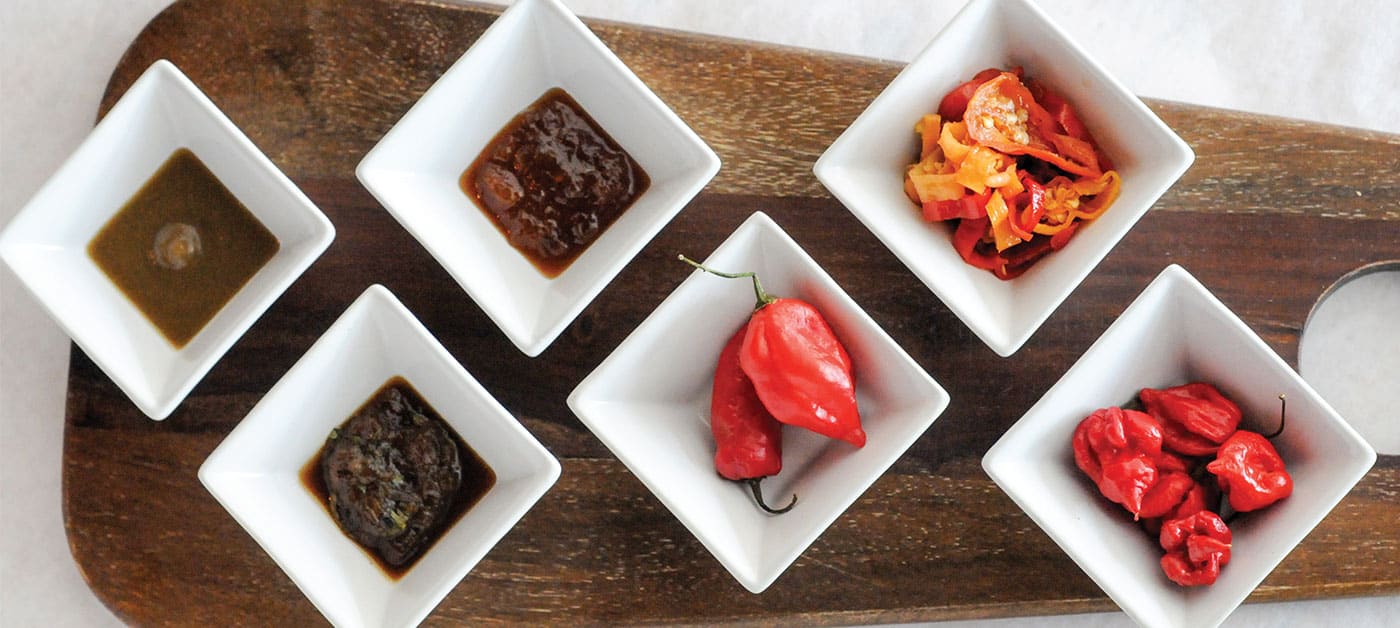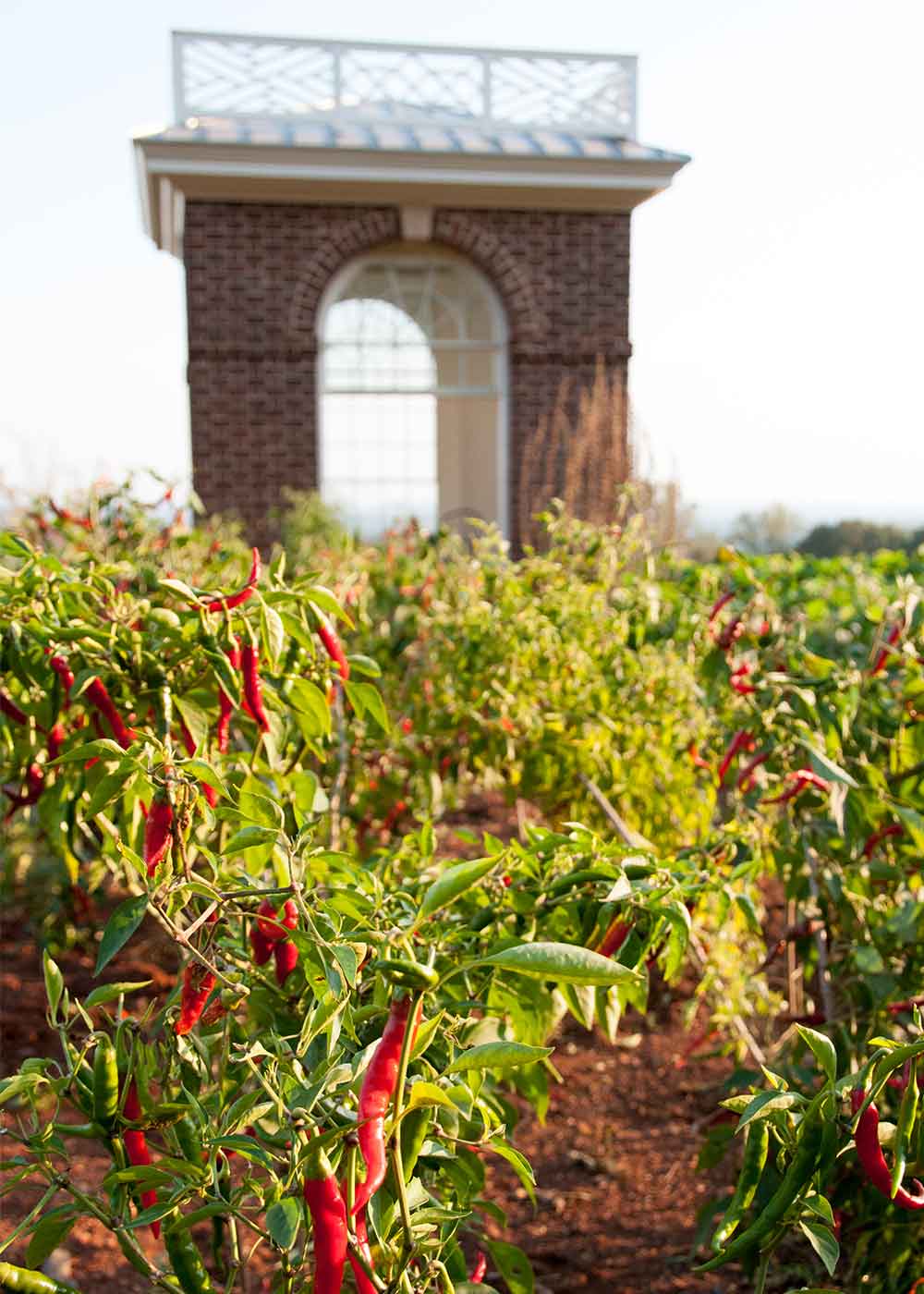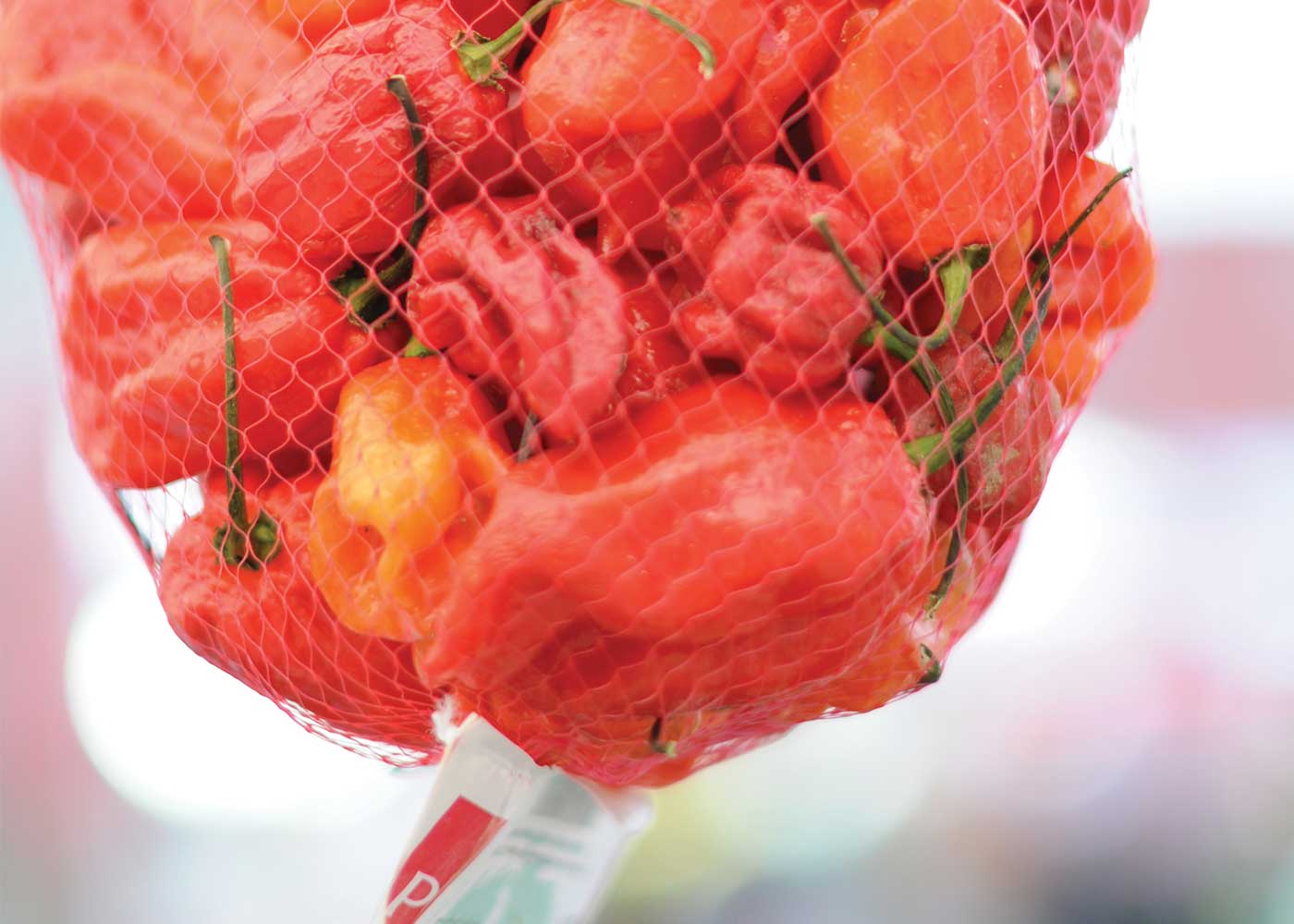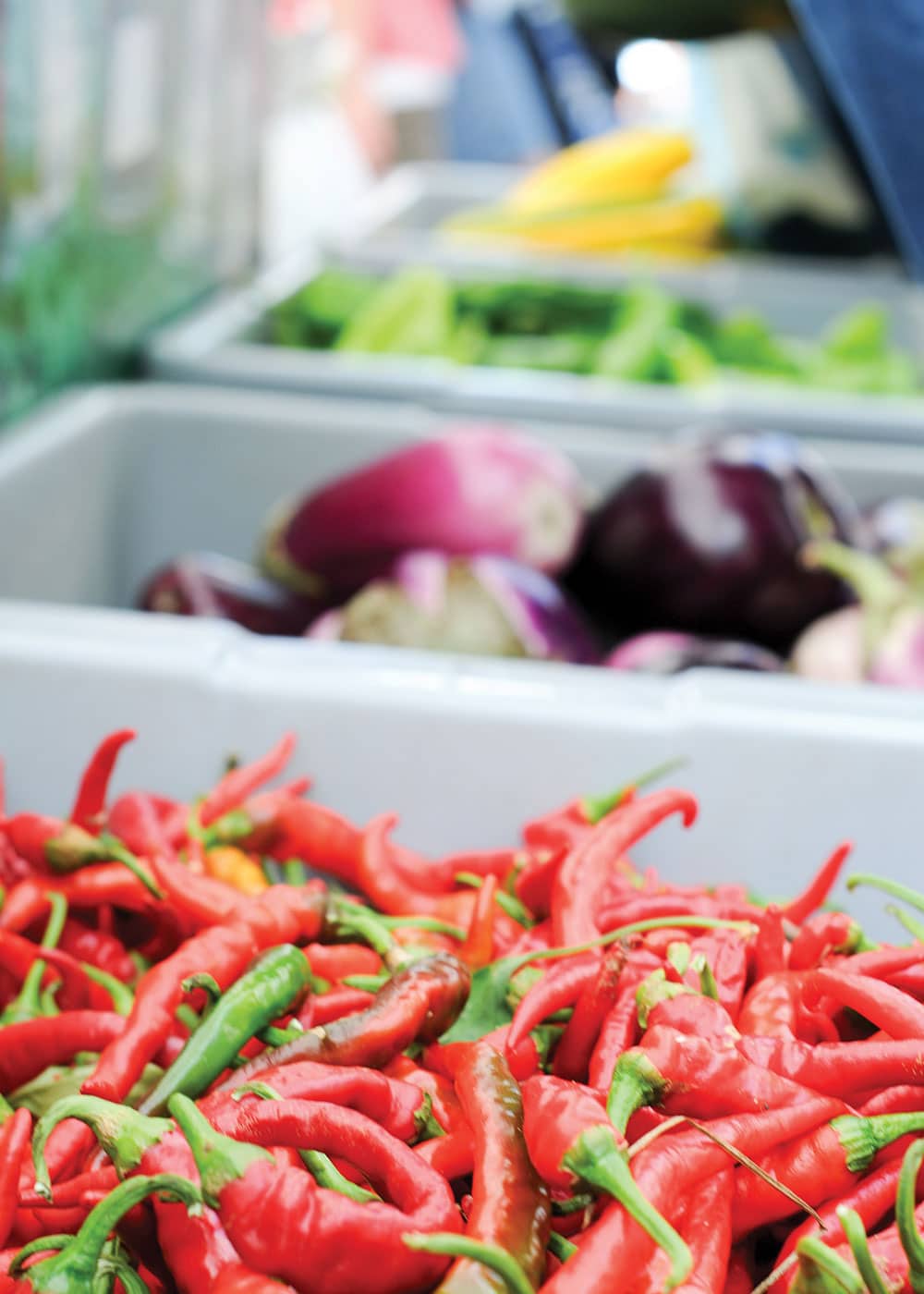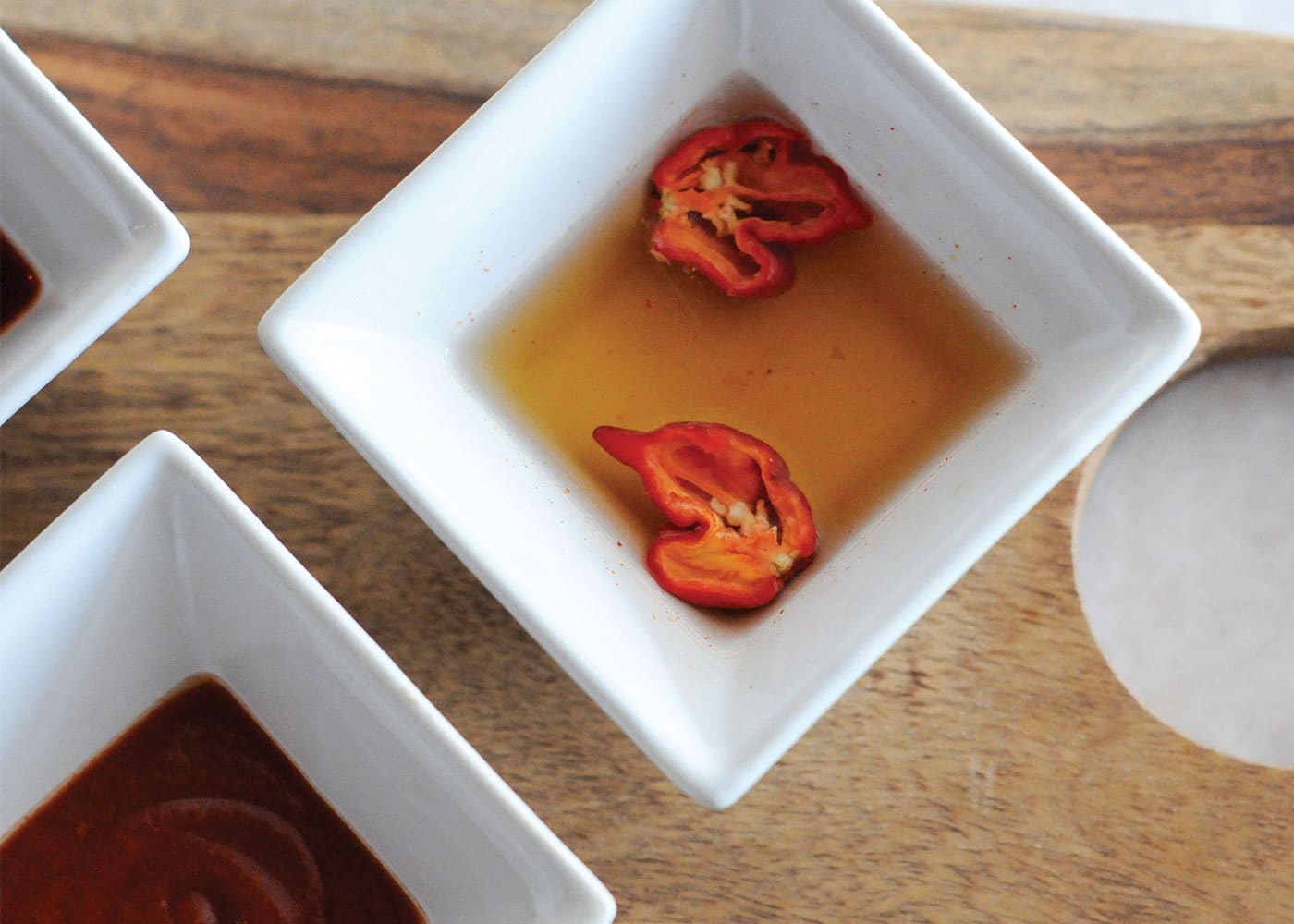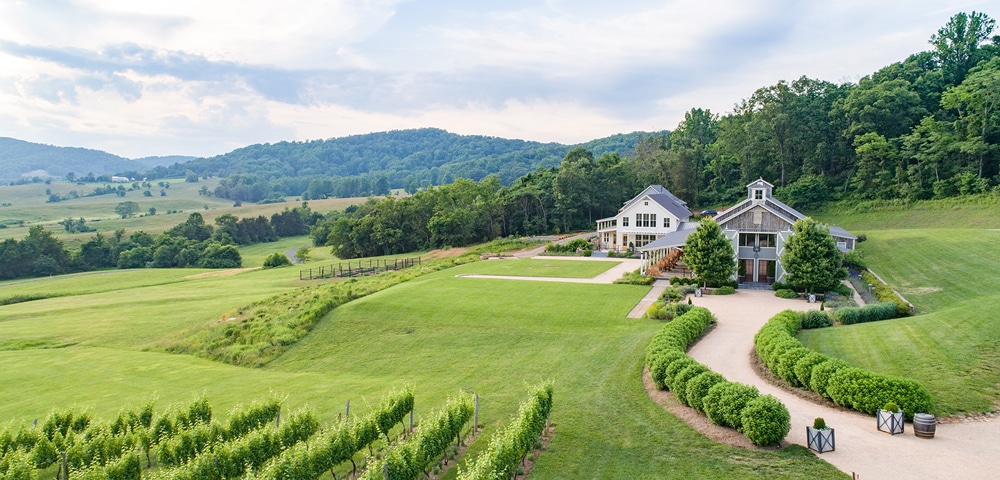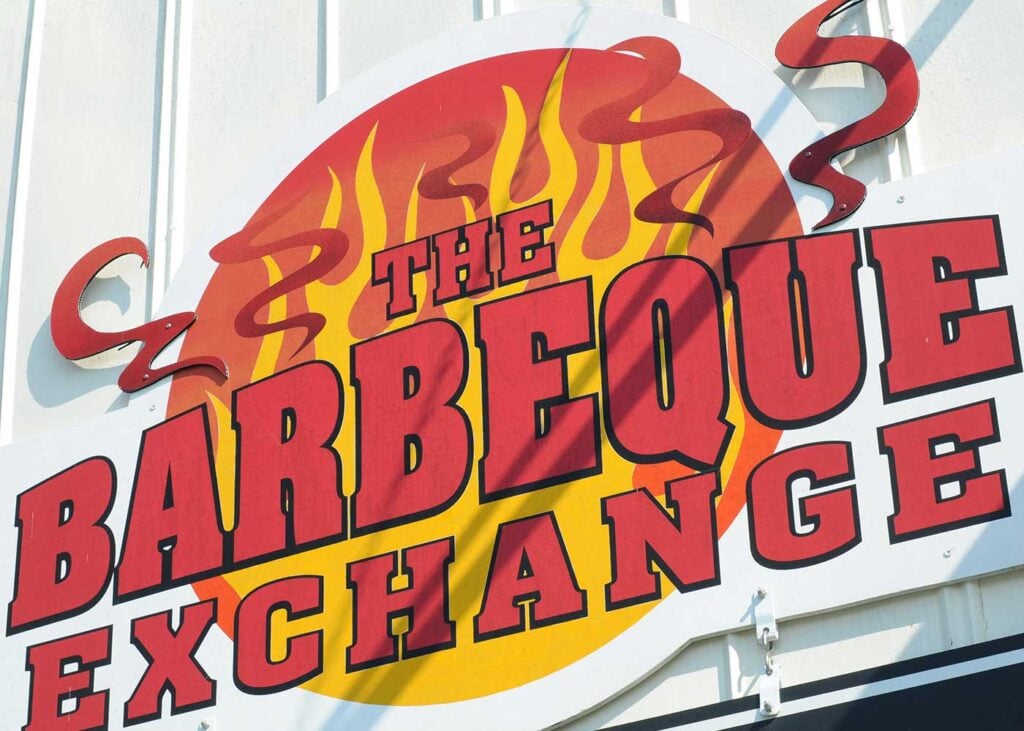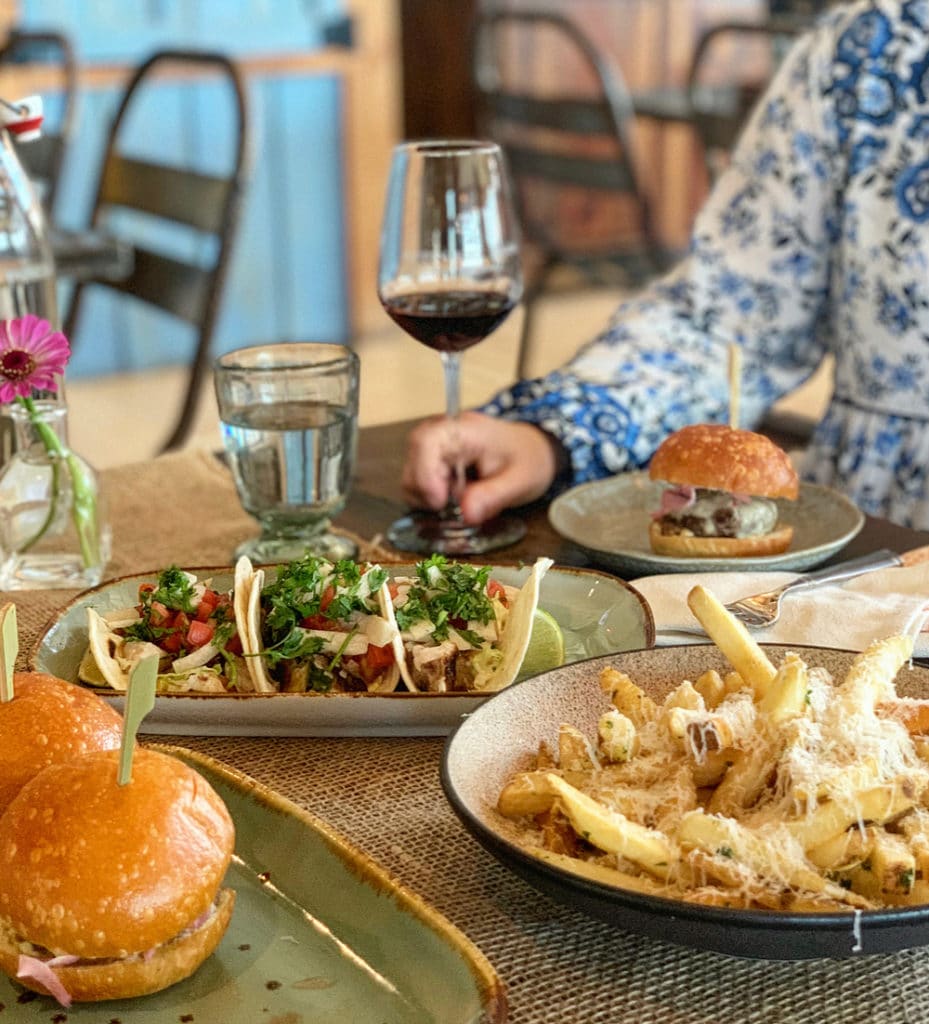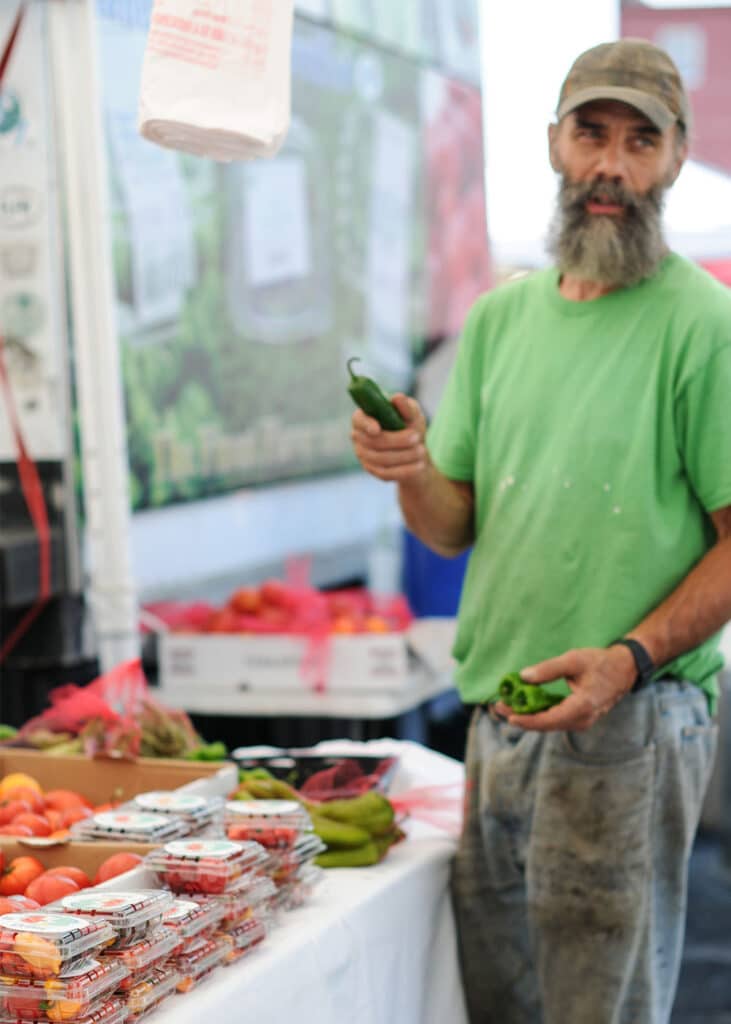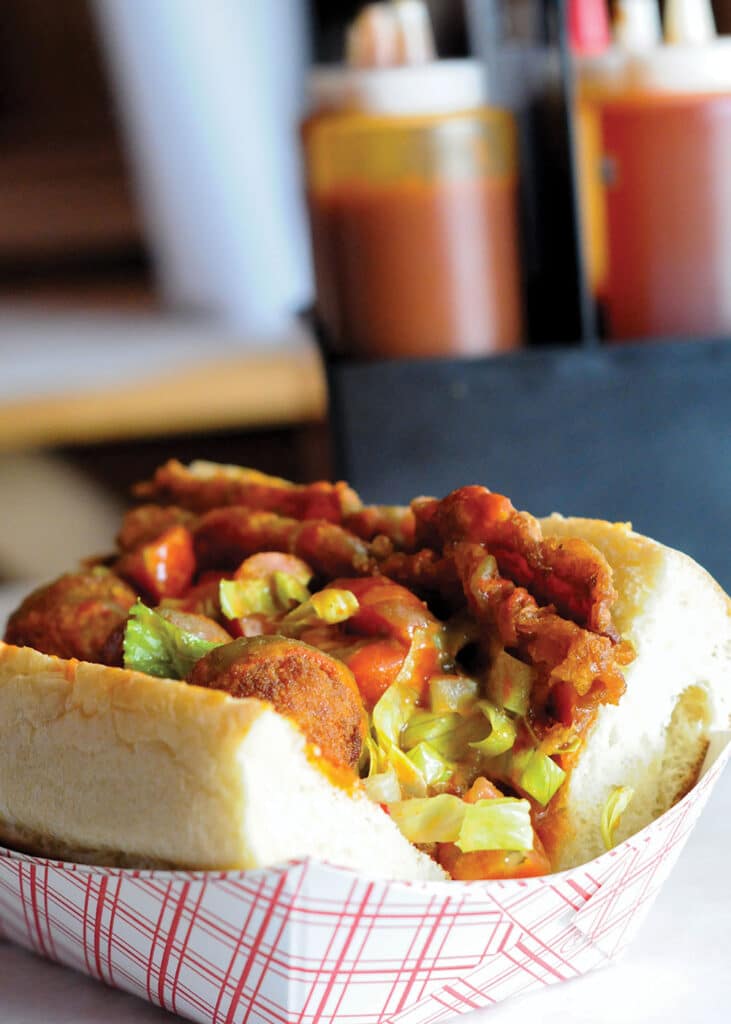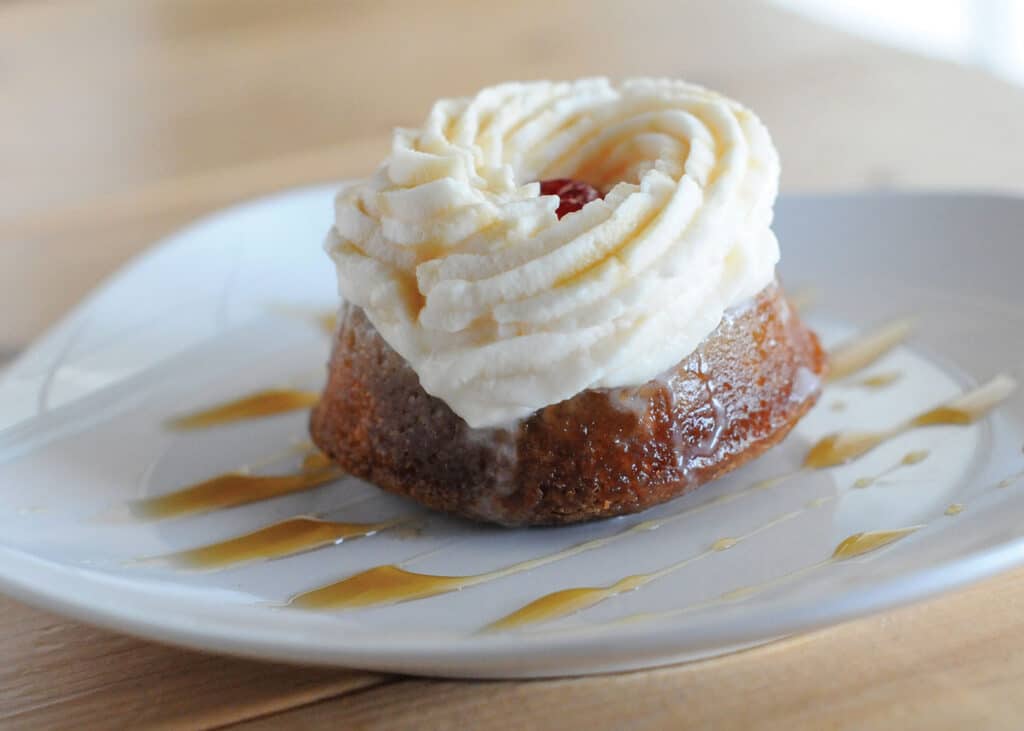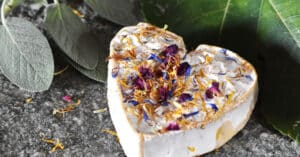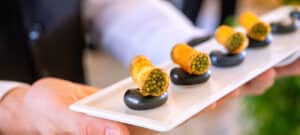My first introduction to the chili pepper came to me as an 8-year-old, when every Thursday night was pizza night for our family. My sister and I looked forward with great anticipation to this singular night of indulgence. To “protect” his generous portion of pizza, the first thing my father would do upon arriving home was to douse his slices with a large helping of hot pepper flakes. Naturally, this annoyed me to no end. So, as not to be denied, I set about developing a tolerance for the stuff. After a few weeks, I was successful. The smug satisfaction I felt more than made up for my burning mouth and watering eyes. My sister, meanwhile, could only look on with envy and amazement.
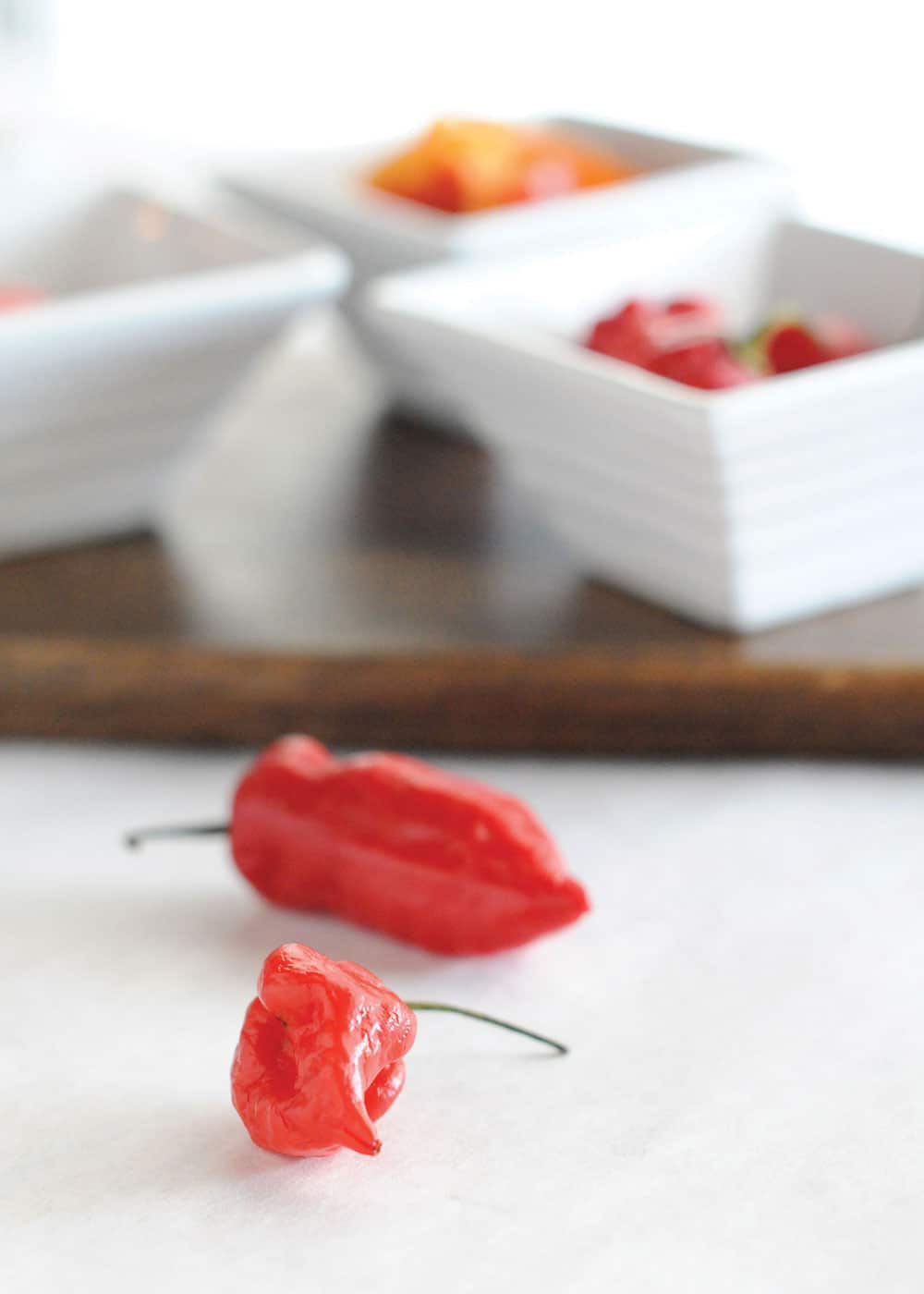
Since then, my father and I have shared a passion for all things spicy—books, recipes, hot sauces and even home grown hot peppers. You might say it runs in the family. I don’t know what it is about the desire to conquer spicy foods, but let’s just say I’ve received more than a couple of well-earned “I survived” t-shirts for my efforts in restaurants that reward those brave enough to take on the hottest dish they can create. I guess I haven’t changed much since I was an 8-year-old.
A Passion for Spicy Food
Not long ago, I was at the Barbeque Exchange in Gordonsville (BBQ Exchange), with my 15-year-old son, along with my wife and mother-in-law. It was Father’s Day. To celebrate, I spontaneously ordered a sandwich called “Hell on a Bun.” As soon as I ordered it, my server began to warn me of the potency of the sandwich with a look of concern. This was no ordinary hot pepper. My wife laughed as I assured the kind server that I was well-versed in the world of spicy. food The “Hell” sandwich was a work of art, piled high with “Bang Bang” bacon, fried Habanero mac n’ cheese, Thai Dragon pepper salad, Ghost Pepper sauce and gorgeous fresh Ghost Pepper and Trinidad Scorpion Pepper slices—two of the hottest peppers on the planet! What an enticing challenge.
Halfway through eating the spicy sandwich, my head was completely on fire, and sweat was pouring down my face. My mother-in-law looked worried. Me, I was loving it! My son, who was also watching with a look of awe, quickly reached over and popped one of the fresh Ghost Pepper slices in his mouth. Just then, the cook who had made the sandwich came out to check in on me for the second time to make sure I was OK. My son asked him, “Hey, was that like a Habanero?” The cook replied, “No that’s a Ghost Pepper. I picked them myself from my garden.” My son looked back to me—a mixture of triumph and macho pride on his face—took a quick photo of the sandwich, and began Facebooking it to his friends. “Cooooool!!” he said. Then suddenly, in the same breath, he looked up and said, “Dad. I…need…milk…NOW.”
And so, the love of hot chili peppers is passed on to yet another generation. The three of us—my dad, myself and my son—have gathered twice now to create our own hot sauces, made from our own home-grown Virginia peppers, and to share cherished stories that have evolved around the endlessly thrilling hot pepper. Our homemade hot sauce is called “3 Bubbas.” The bottle features the apt tagline: “Three generations…One hot mess,” and the description on the humorously designed label (created by my wife) reads, “It’s the kind of sauce that will have you sayin’, ‘Them boys ain’t right!’”
Chili Peppers in Virginia and the Scoville Scale
My wife and mother-in-law generally sit watching the spectacle of these hot peppers challenges that I take, not with the awe my son has, and certainly not with the envy my younger sister felt. Their looks are more along the lines of, “What on earth is wrong with you?” So just what is it that drives people to subject themselves to the excruciating kiss of the hot pepper? Is it really the taste? Is it the burn, which some call the “chili pepper rush,” said to release endorphins in the brain? Or is it the “high five” and the story that just never gets old? To my wife and mother-in-law, who generally support, or tolerate, my perplexing fascination with hot sauce, as I put it on everything from my eggs at breakfast to my portion of dinner that night, it is certainly a mystery. How is it that the humble chili pepper, genus Capsicum, can inspire such foolish, and many might say masochistic, behavior in otherwise well-adjusted people?
The chili pepper gets its “kick” from a compound called Capsaicin, a devilish substance that causes a burning sensation when it comes in contact with mucous membranes like the mouth and eyes.
We have to begin with the chili pepper itself. It’s a fruit, not a vegetable—a member of the nightshade family similar to the tomato. It grows the world over but is particularly associated with hot climates like Mexico, India, Southeast Asia and the Caribbean. The chili pepper gets its “kick” from a compound called Capsaicin, a devilish substance that causes a burning sensation when it comes in contact with mucous membranes like the mouth and eyes. Chili peppers originated in the Americas and spread via trade routes widely during and after the age of Columbus. They come in all sorts of beautiful colors, shapes, sizes and degrees of heat. Heat in a chili pepper is measured by a test known as the Scoville Scale. Measurements range from zero (the non-threatening Bell pepper) to over 2 million for the Carolina Reaper, currently known to have the hottest recorded. The Ghost Pepper, also called the Bhut Jolokia, is currently the seventh hottest in the world with a rating of 1,041,427 Scoville units. To put it into perspective, the Jalapeño pepper, which can vary in heat from plant to plant, measures something around 3- to 10-thousand Scoville units at its hottest. Yes, that’s right, the Ghost Pepper is well over 100 times as hot as the hottest Jalapeño. What is wrong with us, indeed?
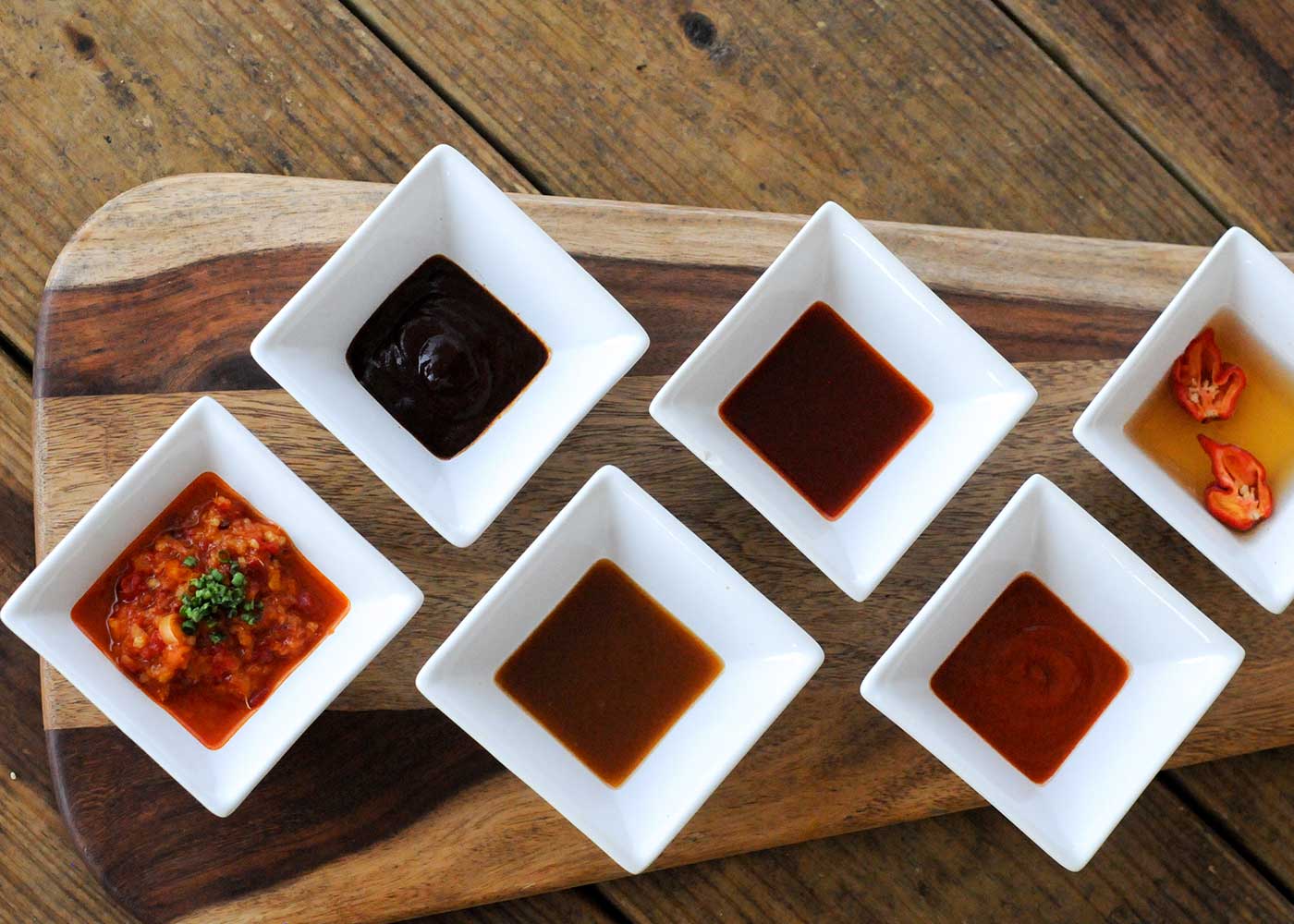
Not surprisingly, Thomas Jefferson, an avid horticulturist, was no stranger to the chili pepper. He planted his first pepper in 1767 at his birthplace in Shadwell. It was a Long Red Cayenne pepper, which also grows in the garden at Monticello (seen above in front of the brick pavilion.) He was also fond of a pepper variety called the Texas Bird, sent to him by his friend Captain Samuel Brown. In fact, documents from the archives of Monticello have brought to light a number of spicy recipes that were enjoyed in Jefferson’s time.
Ghost Peppers in Virginia
These days, chili peppers, including the Ghost Pepper, are grown the world over by amateur gardeners and commercial farms alike. For those who do grow them commercially, it’s a tricky business. Mike Clark of Planet Earth Diversified is an experienced and successful local grower who supplies Virginia hot peppers to many local restaurants, including the BBQ Exchange. Most Saturday mornings, he can be found at the City Market in downtown Charlottesville with many varieties of peppers, including the Ghost Pepper.
According to Clark, it takes about five years to set up a decent system for growing reliable Ghost Peppers. There are a lot of challenges—cross-pollination, weather, bugs and, of course, the harvest itself. You do not want this stuff to get on your skin or on delicate membranes, like the inside of your nose or eye. When you’re handling ghost peppers, wear gloves to protect your hands, and be careful not to touch your face or eyes. Wash your hands frequently and thoroughly, and clean your cooking equipment carefully. If you’re grinding the peppers in a food processor or blender, be careful to avoid inhaling any dust that may arise; it may be a good idea to wear goggles. Finally, there’s a matter of proportion—one Ghost Pepper can go a long way. Clark says often a large harvest can go unused because one can only use so much at a time. As a result, “I sell a lot more Jalapeños,” he says.
Despite all the drama around growing and distributing it, whether as a novelty or entrée, the Ghost Pepper does find its way onto the plate. So, in search of the chef’s side of the story, I returned to the BBQ Exchange where I had earlier ordered, and yes eaten, the entire “Hell on a Bun” sandwich (and was awarded a t-shirt for my efforts). Founded by celebrated and award-winning local Chef Craig Hartman, the BBQ Exchange is also managed by Chef Brooks Tanner.
Barbecue Cuisine in Gordonsville, Virginia
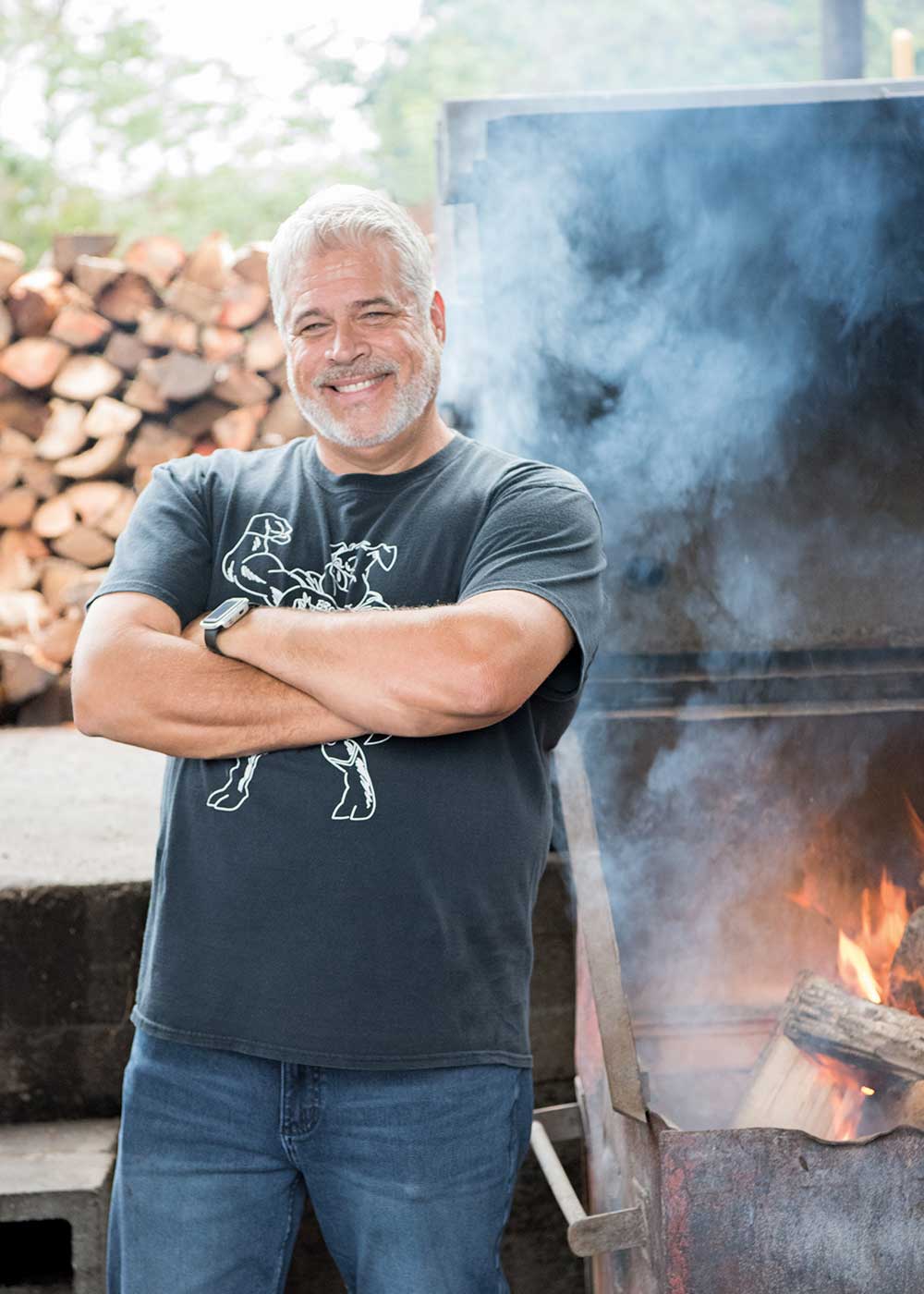
Chefs Hartman and Tanner have known each other for many years. When Hartman opened the BBQ Exchange, he made it his goal to woo Tanner to Gordonsville to share in his vision and love of “old-school, slow-cooked BBQ.” They’ve been collaborating ever since. The “Ghost Pepper” project, as Tanner describes it, was just such a collaboration. It started with an incendiary array of Hartman’s BBQ sauces featuring the Ghost Pepper, called “Caution HOT,” “Poltergeist” and “Hell Fire.” With names like that, who wouldn’t be tempted by the challenge to try them?
Following the success of the sauces, Hartman encouraged Tanner to take it a step further. Tanner pushed the boundaries of cuisine to include Ghost Peppers in sambals, relishes, deviled eggs and even desserts. All this, in addition to the “Hell on a Bun” sandwich, exemplifies BBQ Exchange as a Chili-head’s dream. Aside from Hartman and Tanner, several chefs in Virginia Wine Country enjoy working with spicy food and flavoring. Chef Victoria Cosner at Pippin Hill Farm & Vineyards holds Ancho Chili as her favorite ingredient. For visitors who love adventurous dining, Virginia Wine Country is full of excellent farm-to-table experiences such as the newly launched Veritas Supper Series at Veritas Winery or delicious small plated by the incredible Chef Tim Moore at the Early Mountain Vineyards tasting room.
As far as spicy food goes, the best wines to pair with it are dry whites such as Riesling and Gewürztraminer. Although not as common as other wines, both can be found in Virginia Wine Country. Try pairing your Ghost Pepper sandwiches with a Gold-Winning Riesling from Shenandoah Vineyards or a Gewürztraminer from Afton Mountain Vineyards.
Foods Made with the Ghost Pepper
Tanner is always striving to do something “cool” with food. The key to his success is not being afraid to fail. “Ghost Peppers are an untapped resource,” Tanner says. “A lot of chefs are afraid to use them. But they have this really unique, distinctive flavor that most people never get to enjoy, because they can’t get past the heat. So the trick is to capture that flavor and not blow people out of their seats. I want to use the Ghost Pepper in a way that could be on a fine dining menu—not just a novelty.”
He’s certainly achieved that. When I visited him, Tanner served me a beautiful variety of hot sauces, deviled eggs and a delectable Ghost Pepper pineapple upside-down cake, drizzled with a syrup made of Ghost Pepper and honey that even my wife loved. The slow, subtle burn of the cake was definitely not what you’d expect—combined with the sweetness of the pineapple, the Ghost Peppers yielded a flavor that was complex and truly unforgettable.
Brooks believes that eating BBQ and hot peppers from Virginia “brings people together…it creates a bond of shared experience.” Of his obsession with the Ghost Pepper, he laughs, “people are like…‘It’s crazy; who would do that?’ That’s the kind of food I like to make—food that pushes the envelope. The BBQ Exchange is the only place I can get a 50-pound bag of peppers in front of me and say, what cool thing can I do with these this time.”
So, after all that, I’m left with the same question. What is it about chili peppers like the Ghost Pepper that makes otherwise sane people like myself take the plunge into fiery madness? Is it the rush? Is it the shared suffering of seeing your fellow chili-eater sweat along with you and the stories that you keep telling years later about “that sandwich?” Maybe a secret part of you actually enjoys seeing that incredulous, “What is wrong with you?” look worn by those who don’t share your bravery (or stupidity depending on who you ask). Maybe, like most things, it’s a combination of all these things. The one thing I do know is that thanks to local Virginia pepper farms and the daring chefs at BBQ Exchange who are willing to use them, the chili pepper is alive and kicking in Jefferson’s Virginia, leaving hot chili pepper lovers like me saying, “Wow, that’s so cool!” ~
PETER D. BETHKE, our technical director, has a master’s in screenwriting from USC Cinema Television School and a bachelor’s in creative writing from Middlebury College.
R. L. JOHNSON is our Co-Publisher and Creative Director. Bethke studied at the prestigious ArtCenter College of Design and began her career as a professional photographer in Los Angeles. She moved into graphic design and art direction when she relocated to Charlottesville in 1994. As our company’s co-founder and visionary, she enjoys all aspects of storytelling.

